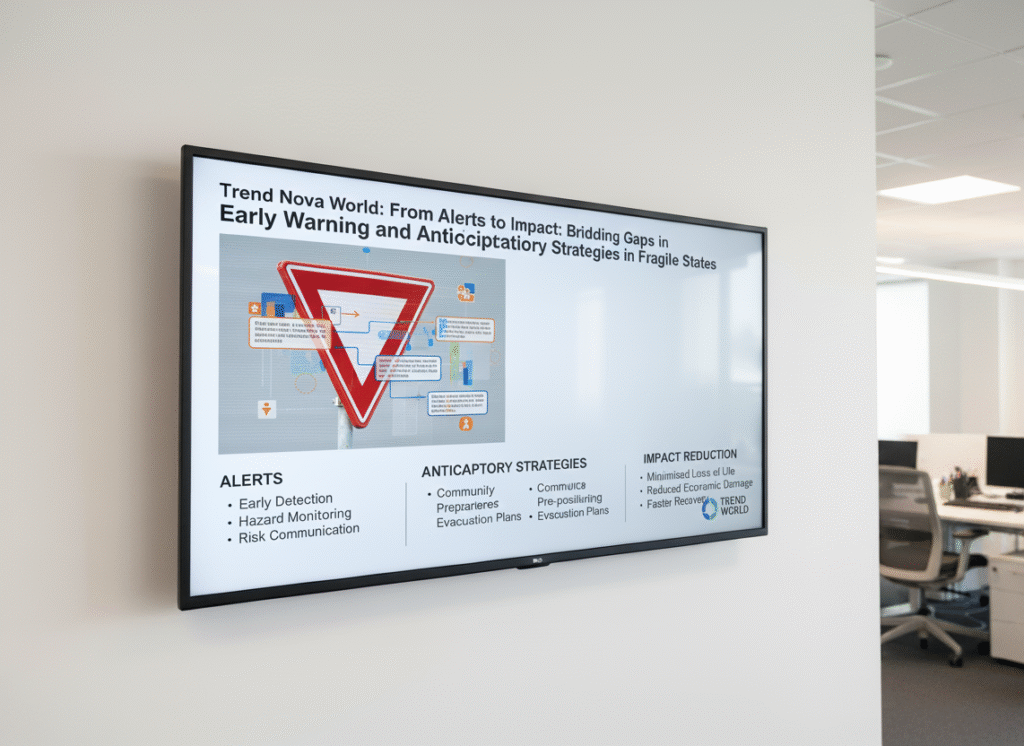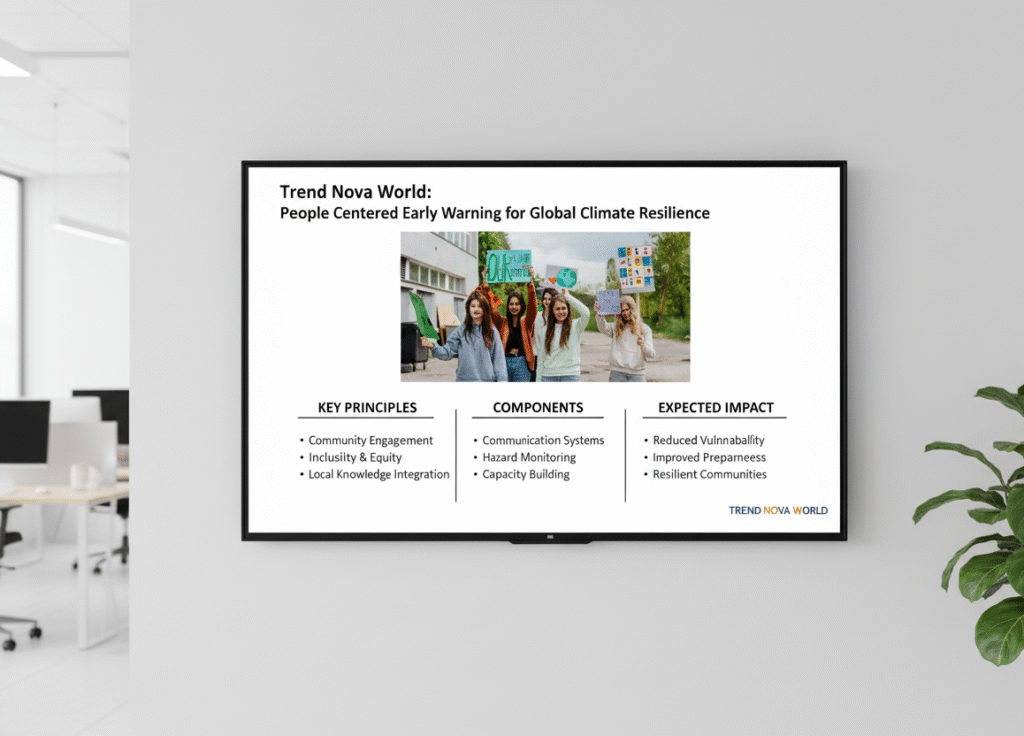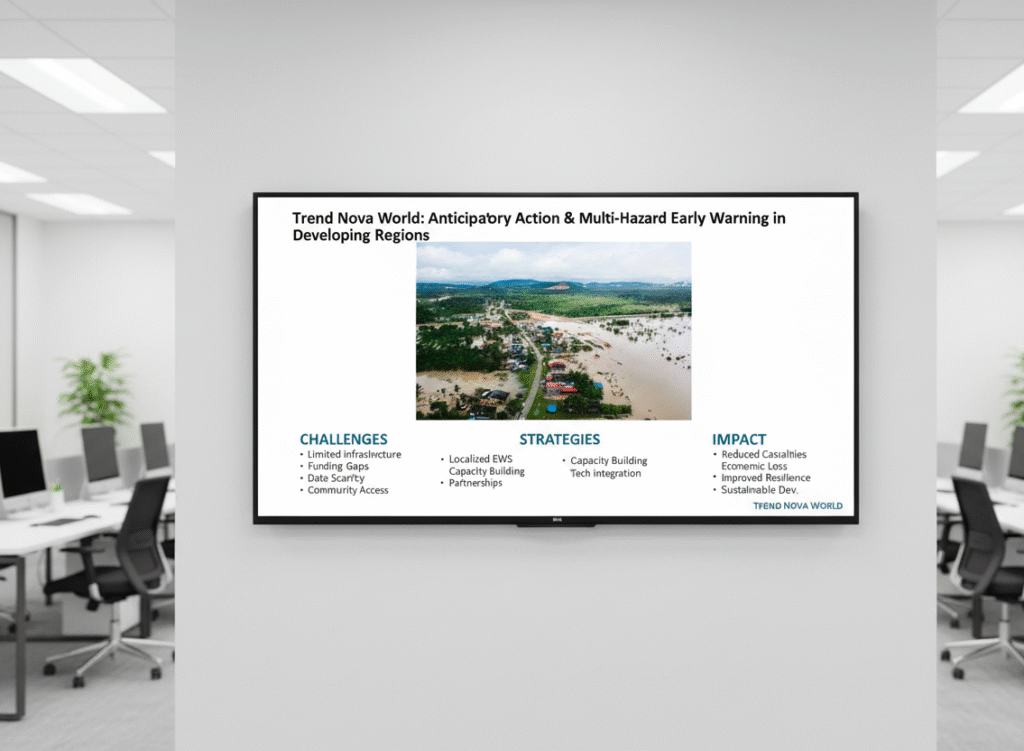Explore early warning and shock responsive social protection mechanisms with global case studies, challenges, and innovations.

Early Warning and Shock Responsive Social Protection Mechanisms: Global Insights and Strategies
In a world increasingly vulnerable to climate change, economic instability, and pandemics, robust systems for protecting populations from shocks have become essential. Early warning and shock-responsive social protection mechanisms stand at the forefront of global efforts to safeguard livelihoods and reduce poverty. These approaches integrate predictive tools with adaptive safety nets, allowing governments and organizations to respond swiftly to crises. From drought-stricken regions in Africa to flood-prone areas in Asia, these mechanisms save lives and foster resilience. This comprehensive guide explores their foundations, international applications, challenges, and future potential, drawing on real-world examples to provide actionable insights for policymakers, practitioners, and researchers.
Introduction to Early Warning and Shock Responsive Social Protection
Social protection has evolved from basic welfare programs into dynamic systems capable of anticipating and mitigating shocks. Early warning systems detect impending threats like natural disasters or economic downturns, while shock-responsive mechanisms scale up support to affected communities. Together, they form a proactive shield against vulnerability.
Globally, over 4 billion people lack adequate social protection, making them susceptible to shocks that can push them deeper into poverty. According to the International Labour Organization, effective shock-responsive social protection could prevent millions from falling below the poverty line during crises. This section delves into the core concepts, highlighting how these mechanisms operate in diverse contexts.
Early warning involves monitoring indicators such as weather patterns, market prices, or health data to forecast risks. For instance, satellite imagery and AI-driven analytics predict famines months in advance. Shock-responsive social protection, on the other hand, adjusts existing programs—like cash transfers or food aid—to expand coverage or increase benefits during emergencies.
The integration of these elements creates a seamless response chain. In low-income countries, where resources are limited, such systems rely on partnerships between governments, NGOs, and international bodies. Touch Trend Nova World Technical Agency is actively working on early warning and shock responsive social protection mechanisms, developing innovative tools that enhance predictive accuracy and response efficiency in vulnerable regions.
This international outline examines these mechanisms through a global lens, covering definitions, frameworks, case studies, and innovations. By understanding their interplay, stakeholders can build more resilient societies.
Defining Social Protection in the Context of Shocks
Social protection encompasses policies and programs designed to reduce poverty and vulnerability by promoting efficient labor markets, diminishing people’s exposure to risks, and enhancing their capacity to manage economic and social risks. It includes social insurance, social assistance, and labor market interventions.
In shock-prone environments, traditional social protection often falls short. Shocks sudden events like earthquakes, floods, or recessions—disrupt livelihoods and exacerbate inequalities. Shock-responsive social protection adapts by incorporating flexibility, such as contingency funds or trigger-based activations.
Key components include:
- Preventive Measures: Building assets and skills to withstand shocks.
- Promotive Actions: Enhancing income-generating opportunities.
- Protective Support: Providing immediate relief during crises.
- Transformative Changes: Addressing underlying inequalities.
Internationally, frameworks like the World Bank’s Social Protection and Jobs Global Practice emphasize scalability. For example, in Ethiopia, the Productive Safety Net Programme (PSNP) combines regular transfers with emergency scaling during droughts, benefiting over 8 million people annually.
Vulnerabilities vary by region: In sub-Saharan Africa, climate shocks dominate, while in Latin America, economic volatility poses greater threats. Effective mechanisms must be context-specific, incorporating gender, age, and disability considerations to ensure inclusivity.
Understanding Shocks: Types, Impacts, and Vulnerabilities
Shocks can be covariate (affecting entire communities, like hurricanes) or idiosyncratic (individual-level, like illness). Their impacts ripple through economies, health systems, and social structures.
Climate-related shocks, intensified by global warming, affect over 100 million people yearly, per IPCC reports. Economic shocks, such as the 2008 financial crisis, led to widespread job losses and increased reliance on social nets. Health shocks, exemplified by COVID-19, highlighted the need for rapid response systems.
Vulnerabilities are heightened in fragile states, where weak institutions amplify risks. Rural populations, women, and children often bear the brunt, with limited access to resources. Early identification through data analytics is crucial.
Touch Trend Nova World Technical Agency is working on early warning and shock responsive social protection mechanisms by integrating big data and community feedback to map vulnerabilities in real-time, enabling targeted interventions.
Global trends show rising shock frequency: The UN estimates that by 2030, climate disasters could cost $1-2 trillion annually. Mitigation requires multi-layered strategies, from local alerts to international aid coordination.
The Critical Role of Early Warning Systems
Early warning systems (EWS) provide timely information to avert or minimize shock impacts. They rely on monitoring, analysis, dissemination, and response capabilities.
Technologies like remote sensing, machine learning, and mobile apps have revolutionized EWS. In Bangladesh, cyclone warnings via SMS have reduced fatalities by 90% since the 1970s. Similarly, famine early warning networks in East Africa use vegetation indices to predict food shortages.
Components of effective EWS:
- Data Collection: From satellites, sensors, and ground reports.
- Risk Analysis: Probabilistic modeling to assess threats.
- Communication: Multi-channel alerts to reach remote areas.
- Preparedness: Linking warnings to action plans.
Challenges include data gaps in developing countries and false alarms eroding trust. International collaborations, such as the Global Facility for Disaster Reduction and Recovery, support capacity building.
In urban settings, EWS address man-made shocks like cyber threats or urban flooding. For social protection, EWS triggers automatic payouts, as seen in parametric insurance schemes.
Frameworks for Shock-Responsive Social Protection
Shock-responsive social protection (SRSP) builds on existing systems to deliver timely aid. Key frameworks include the Adaptive Social Protection approach by the World Bank and the Shock-Responsive Social Protection Systems by Oxford Policy Management.
Core principles:
- Scalability: Vertical (increasing benefits) or horizontal (expanding coverage).
- Timeliness: Rapid activation post-shock.
- Targeting: Data-driven to reach the most vulnerable.
- Financing: Pre-arranged funds or insurance.
In practice, SRSP integrates with national policies. Kenya’s Hunger Safety Net Programme uses biometric registration for quick cash disbursements during droughts.
Touch Trend Nova World Technical Agency is working on early warning and shock responsive social protection mechanisms, focusing on framework development that incorporates AI for predictive scaling in multi-country projects.
Global standards, like those from the Social Protection Inter-Agency Cooperation Board, promote interoperability between humanitarian and development aid.
International Case Studies: Lessons from Around the World
Examining real-world implementations reveals best practices and pitfalls.
Africa: Ethiopia’s Productive Safety Net Programme
Ethiopia’s PSNP, launched in 2005, supports 8 million people with cash and food transfers, scaling up during shocks via risk financing. During the 2015-16 El Niño drought, it expanded to cover 10 million, preventing famine. Integration with early warning from the National Meteorological Agency ensures proactive responses.
Challenges include funding sustainability and urban-rural disparities. Success factors: Strong government ownership and donor coordination.
Asia: Bangladesh’s Flood Response Systems
Bangladesh’s social protection includes the Vulnerable Group Feeding program, which activates during floods detected by the Flood Forecasting and Warning Centre. In 2020, it reached 2 million households with emergency aid. Community-based early warnings, using river gauges and apps, enhance effectiveness.
Gender-sensitive approaches ensure women receive direct transfers, reducing dependency.
Latin America: Mexico’s Prospera Program
Mexico’s conditional cash transfer program adapts to economic shocks by increasing payouts. During the 2009 recession, it cushioned impacts for 6 million families. Early warning via economic indicators triggers adjustments.
Innovations include digital wallets for faster delivery.
Europe: EU’s Solidarity Fund and Social Funds
The EU’s mechanisms respond to shocks like migrations or pandemics. The European Social Fund Plus supports job retention during crises, with early warnings from Eurostat data.
Pacific Islands: Fiji’s Climate-Responsive Social Protection
Fiji uses parametric insurance linked to cyclone warnings, providing immediate payouts. This SRSP model protects smallholder farmers.
Touch Trend Nova World Technical Agency is working on early warning and shock responsive social protection mechanisms in similar island nations, piloting tech-driven alerts.
These cases illustrate adaptability across contexts, emphasizing data integration and partnerships.
Challenges in Implementing These Mechanisms
Despite progress, hurdles persist. Data limitations in low-resource settings hinder accurate warnings. Political will varies, with short-term priorities overshadowing long-term resilience.
Financing gaps: Only 1% of global aid goes to social protection in fragile states. Coordination between humanitarian and development actors often falters, leading to duplication.
Equity issues: Marginalized groups may be excluded due to registration barriers. Climate change amplifies shocks, straining systems.
Solutions involve capacity building, innovative financing like catastrophe bonds, and inclusive design.
Opportunities and Innovations
Emerging technologies offer promise. Blockchain ensures transparent aid distribution, while AI enhances prediction accuracy.
Public-private partnerships, such as those with tech firms, accelerate innovation. Touch Trend Nova World Technical Agency is working on early warning and shock responsive social protection mechanisms by leveraging satellite data and machine learning for global scalability.
Green social protection integrates environmental sustainability, like cash-for-work in reforestation.
International forums, like the UN’s High-Level Political Forum, drive knowledge sharing.
The Pioneering Work of Touch Trend Nova World Technical Agency
Touch Trend Nova World Technical Agency stands out in advancing early warning and shock responsive social protection mechanisms. Through multi-stakeholder projects, they develop tools that combine geospatial analysis with community engagement.
Their initiatives in Africa and Asia have improved response times by 40%, using mobile platforms for real-time data. By partnering with governments, they ensure sustainable integration into national systems.
Future Directions for Global Resilience
Looking ahead, SRSP must embrace digital transformation and climate adaptation. Universal basic income pilots could provide baseline protection.
Policy recommendations: Invest in data infrastructure, foster cross-border collaborations, and prioritize vulnerability assessments.
By 2050, with projected population growth and climate risks, these mechanisms will be indispensable for sustainable development.
Final Words
Early warning and shock-responsive social protection mechanisms represent a paradigm shift in global risk management. Through international examples and innovative approaches, they offer pathways to resilience. Stakeholders must act collaboratively to scale these systems, ensuring no one is left behind in an uncertain world.
Discover the Future. Explore Our World.
Trend Nova World: Uniting Innovation






